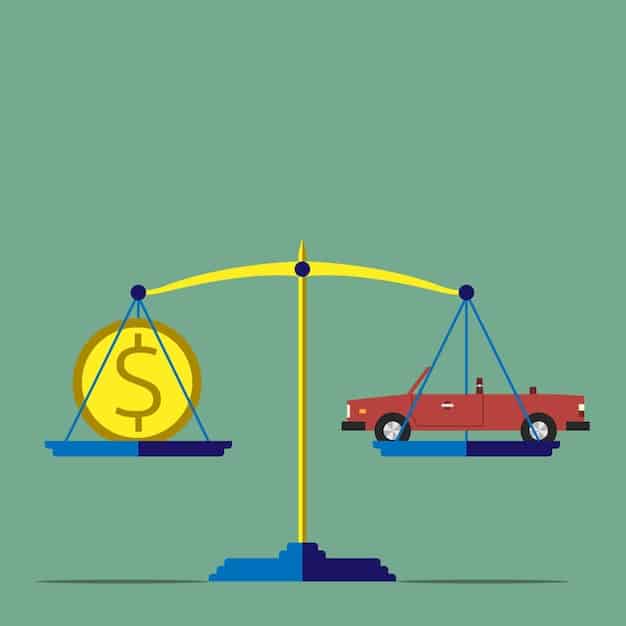15% Corporate Tax Rate: Impact on US Businesses in 2025

The proposed 15% corporate tax rate could significantly impact US businesses in 2025 by potentially increasing after-tax profits for many companies, incentivizing investment, and influencing economic growth, while also raising concerns about the national debt and potential benefits for larger corporations.
Navigating the complexities of tax policy is crucial for US businesses, especially with potential changes on the horizon. One significant proposal being discussed is the implementation of a 15% corporate tax rate which could impact US businesses in 2025. Understanding the potential ramifications of this change is critical for strategic planning and financial forecasting.
Understanding the Proposed 15% Corporate Tax Rate
The concept of a 15% corporate tax rate has been circulating within economic and political spheres as a potential strategy to stimulate economic growth and enhance the competitiveness of US businesses. It represents a significant departure from recent tax structures and could have wide-ranging implications.
This proposed rate aims to strike a balance between encouraging corporate investment and ensuring adequate government revenue. Examining the context and motivations behind this proposal is crucial for assessing its potential effects.
Historical Context of Corporate Tax Rates
To truly grasp the significance of a 15% corporate tax rate, it’s essential to consider the historical backdrop of such policies in the United States. Corporate tax rates have undergone several transformations over the decades, each corresponding with different economic priorities and political philosophies.
From the high rates of the mid-20th century to more recent adjustments, understanding these shifts provides valuable perspective.
- Early Tax Policies: Examine the initial establishment of corporate tax and its evolution through the World Wars.
- Reagan Era Reforms: Evaluating the impact of tax cuts during the Reagan administration on corporate behavior and economic growth.
- Recent Changes: Understanding of the shift introduced by the Tax Cuts and Jobs Act of 2017 and how it altered the corporate tax landscape.
Historically, lower rates have often been justified as a means to stimulate investment and job creation, while higher rates have been used to fund public services and reduce income inequality.
Potential Benefits for US Businesses
A 15% corporate tax rate could offer several potential benefits for US businesses operating across various sectors. Lowering the tax burden could result in increased after-tax profits, which businesses might reinvest in growth initiatives, employee compensation, or research and development.
The specific impact of such a tax change would vary depending on a company’s size, industry, and existing tax strategies.

Increased Investment and Expansion
One of the most touted benefits of a lower corporate tax rate is the potential for increased investment and business expansion. Companies with more available capital may be more inclined to invest in new projects, hire additional employees, and expand their operations.
This could lead to significant economic growth and increased job opportunities.
- Capital Investments: How a lower tax rate might encourage businesses to invest in equipment, technology, and infrastructure.
- Research and Development: The potential for increased spending on R&D, leading to innovation and competitive advantages.
- Job Creation: Exploring how businesses might hire more employees as a direct result of tax savings.
Ultimately, the extent to which these benefits materialize depends on various economic factors and how businesses choose to allocate their tax savings.
Possible Drawbacks and Challenges
While a 15% corporate tax rate could offer several advantages, it is important to acknowledge potential drawbacks and challenges. One significant concern is the potential impact on government revenue and the national debt.
Reduced corporate tax revenue could necessitate cuts in public spending or increases in other taxes, affecting various sectors of the economy.
Impact on Federal Revenue
A lower corporate tax rate could lead to a substantial reduction in federal revenue, which could have significant implications for government programs and services. Balancing these revenue losses with potential economic gains poses a major challenge.
It is crucial to analyze the long-term fiscal impact and explore alternative revenue sources.
- Government Spending: How reduced tax revenue could lead to potential cuts in public services such as education, healthcare, and infrastructure.
- National Debt: The potential impact on the national debt and the need for fiscal responsibility.
- Alternative Revenue Sources: Exploring options such as broadening the tax base or increasing other taxes to offset revenue losses.
Balancing potential economic benefits with fiscal responsibility is essential for ensuring the long-term sustainability of government programs and services.
Sector-Specific Impacts
The impact of a 15% corporate tax rate is unlikely to be uniform across all sectors of the US economy. Some industries may benefit more than others, depending on their existing tax burdens, capital intensity, and growth prospects.
Understanding these sector-specific effects is crucial for assessing the overall economic impact of the proposed tax rate.

Winners and Losers
Certain sectors might experience more significant benefits from a lower corporate tax rate due to their tax structures and growth potential. Identifying potential winners and losers can provide insights into the broader economic implications.
Analyzing these differences is crucial for nuanced policy making.
- Technology Sector: How tech companies with substantial R&D investments might benefit from increased after-tax profits.
- Manufacturing Sector: The potential for manufacturers to reinvest in upgrading equipment and expanding production.
- Service Sector: How service-based businesses might use tax savings to improve employee compensation and customer service.
Ultimately, the specific effects on each sector depend on various factors, including market conditions, regulatory changes, and global competition.
Economic Implications and Forecasting
Predicting the precise economic implications of a 15% corporate tax rate requires careful analysis and forecasting. Various economic models and data can be used to estimate the potential effects on GDP growth, employment rates, and inflation.
Understanding these dynamics is vital for informed decision-making.
Short-term vs. Long-term Effects
It is important to distinguish between the short-term and long-term economic effects of a lower corporate tax rate. While certain benefits might be immediately apparent, others may take years to materialize.
Assessing these different timelines is crucial for evaluating the policy’s long-term success.
- Initial Impact: How the economy might respond in the first few years after the tax rate change.
- Long-Term Growth: The potential for sustained economic growth over a decade or more as a result of increased investment and productivity.
- Unforeseen Consequences: Recognizing the possibility of unintended effects and the need for adaptive policy adjustments.
Accurate forecasting requires consideration of various factors, including global economic trends, technological advancements, and demographic shifts.
Policy and Political Considerations
The implementation of a 15% corporate tax rate is contingent on various policy and political considerations. Tax reforms often involve extensive debates and negotiations among policymakers, stakeholders, and the public.
Understanding the political landscape is essential for gauging the likelihood of such a policy change.
Political Feasibility
The political feasibility of a 15% corporate tax rate depends on the current political climate, the balance of power in Congress, and the level of public support. Overcoming political obstacles requires effective communication and compromise.
Analyzing these dynamics is crucial for realistic expectations.
- Bipartisan Support: The potential for securing support from both Democrats and Republicans.
- Lobbying Efforts: How various interest groups might influence the legislative process.
- Public Opinion: Gauging public sentiment and addressing concerns about fairness and equity.
Achieving broad support for tax reform often requires addressing concerns from all sides and demonstrating clear economic benefits.
In conclusion, a proposed 15% corporate tax rate presents a complex scenario with both opportunities and challenges for US businesses. Understanding its potential impacts, from increased investments to impacts on federal revenue, is critical for businesses and policymakers alike.
| Key Point | Brief Description |
|---|---|
| 💰 Increased Investment | Lower taxes may lead to higher investments in business growth. |
| 📈 Economic Growth | Tax cuts could stimulate the economy and job creation. |
| 📉 Revenue Impact | Government revenue may decrease, affecting public services. |
| ⚖️ Sector Disparities | Some sectors could benefit more than others. |
FAQ
▼
A 15% rate could significantly boost small businesses by increasing after-tax income, which can then be reinvested into expansion, hiring, or technology upgrades, fostering growth and competitiveness.
▼
Potential downsides include reduced federal revenue, which could lead to cuts in public services or increased national debt, necessitating careful budgetary adjustments and fiscal planning.
▼
Industries with high capital investment and R&D, like technology and manufacturing, might benefit most due to increased funds available for innovation and infrastructure enhancements.
▼
A 15% rate would position the US competitively among countries with low corporate tax rates, potentially attracting foreign investment and encouraging domestic companies to stay.
▼
The proposal’s political feasibility depends on bipartisan support and public perception, requiring policymakers to address concerns about fairness and the revenue implications to secure enactment.
Conclusion
In summary, the proposed 15% corporate tax rate presents a multifaceted scenario for US businesses in 2025. While it could potentially spur economic growth and incentivize investment, concerns about federal revenue and sector-specific impacts must be carefully considered to ensure a balanced and sustainable economic future.





